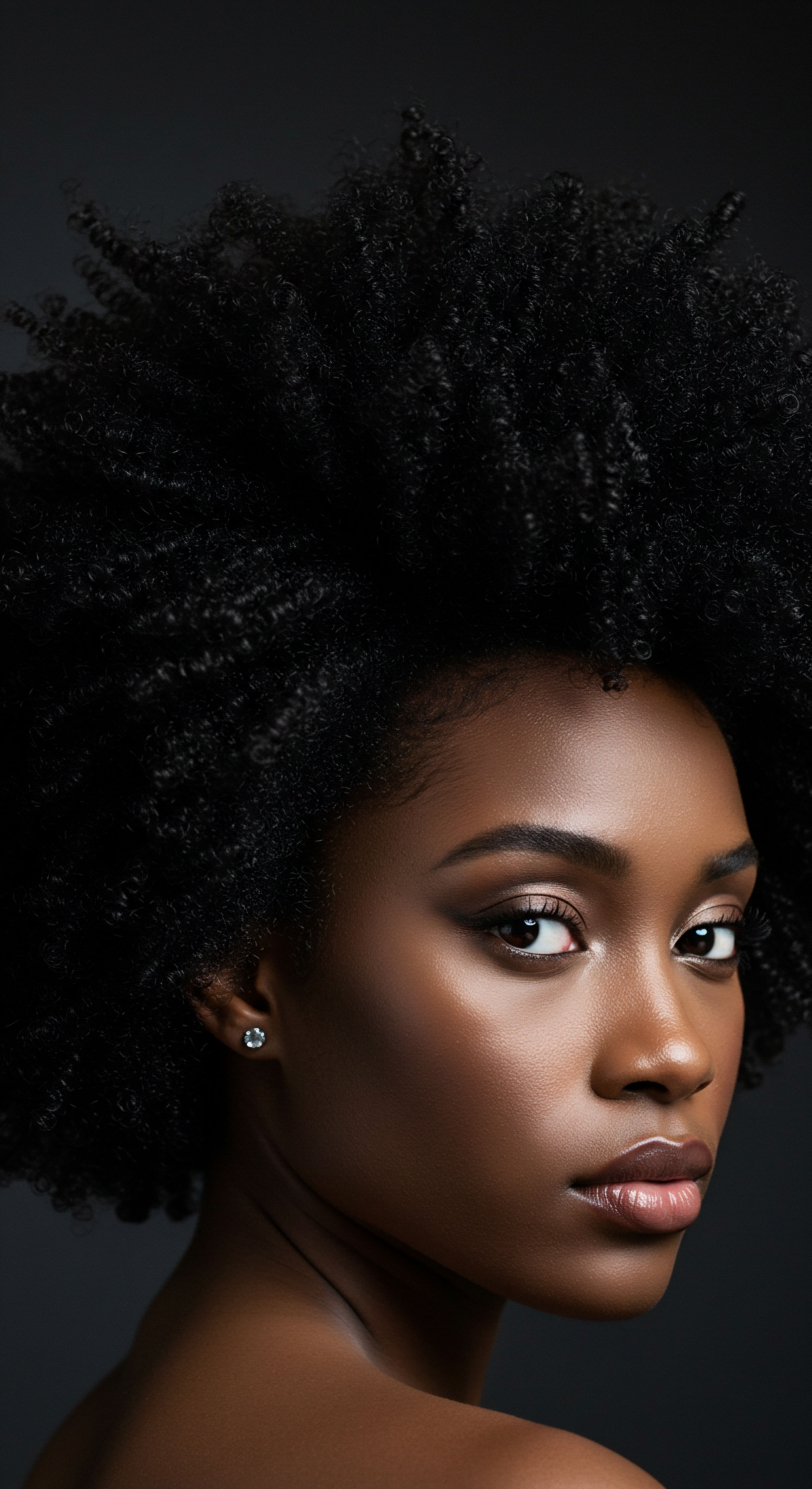
Fundamentals
The journey to truly understand and honor textured hair often begins with a gentle inquiry into its intrinsic nature, particularly the concept known as Curl Pattern Preservation. At its most fundamental, this idea refers to the diligent care and strategic practices aimed at maintaining the innate shape, integrity, and vibrancy of naturally curly, coily, or wavy strands. Imagine a delicate blossom, unfurling its petals with distinct grace; Curl Pattern Preservation seeks to ensure each coil and curve retains its intended form, resisting external forces that might cause it to lose its unique definition or become compromised. It is about safeguarding the very blueprint of the hair fiber, allowing it to flourish in its most authentic expression.
For those new to the realm of textured hair care, particularly within the rich heritage of Black and mixed-race hair, the meaning of Curl Pattern Preservation extends beyond mere aesthetics. It signifies a deep respect for the hair’s natural inclinations and its structural design. Each individual strand, from its emergence from the scalp to its full length, possesses a specific curvature determined by the shape of its follicle.
Round follicles give rise to straight hair, while progressively oval or flattened follicles yield waves, curls, and the tightest coils. Preserving this pattern involves a mindful approach to cleansing, conditioning, and styling, ensuring that the hair’s inherent structure is not unduly stressed or altered.
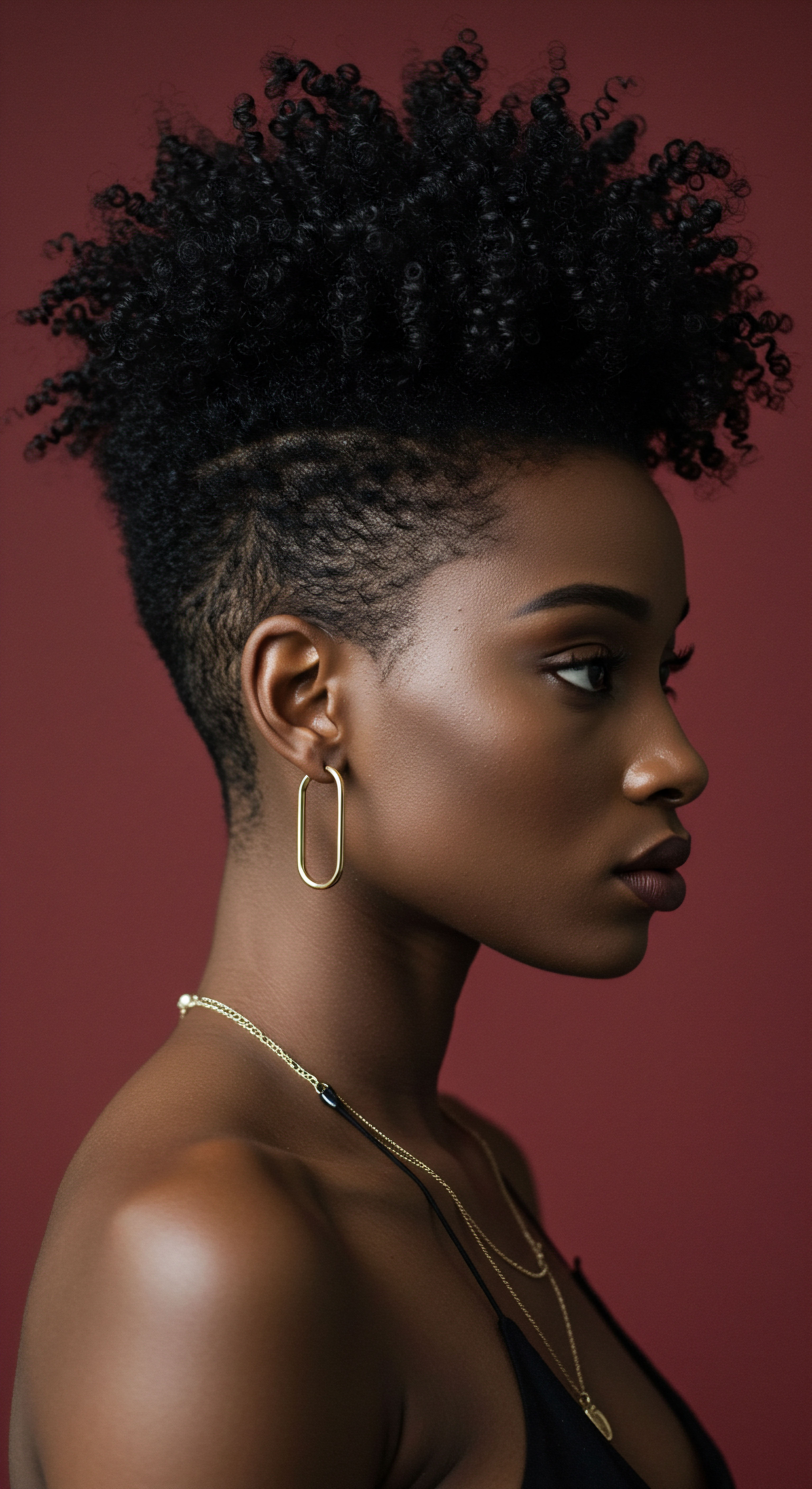
The Hair’s Natural Architecture
Understanding the physical architecture of textured hair illuminates why Curl Pattern Preservation holds such significance. The hair shaft, though seemingly simple, is a marvel of biological engineering. It comprises three primary layers ❉ the outermost Cuticle, a protective shield of overlapping scales; the central Cortex, which provides strength and elasticity; and the innermost Medulla, often absent in finer hair.
For textured hair, the cuticle layers are often smaller and more tightly packed, yet paradoxically, the hair itself can be more susceptible to moisture loss and mechanical damage due to its spiraled configuration. This unique morphology necessitates specific care to prevent the disruption of its delicate curl bonds.
Curl Pattern Preservation is the art of honoring and sustaining the intrinsic shape and vitality of textured hair, allowing its natural design to truly shine.
The science behind the curl lies predominantly in the asymmetrical distribution of keratin proteins within the hair cortex and the elliptical shape of the hair follicle itself. These elements combine to create the helical twist that defines each curl, coil, or wave. When hair is handled roughly, exposed to excessive heat, or subjected to harsh chemical treatments, these delicate internal structures can be compromised, leading to a loss of definition, increased frizz, and ultimately, a diminished curl pattern. Therefore, Curl Pattern Preservation is a foundational principle for cultivating healthy, resilient textured hair.

Intermediate
Moving beyond the foundational understanding, the intermediate meaning of Curl Pattern Preservation delves into its practical applications and how it integrates into the rhythms of daily and weekly textured hair care. This phase involves recognizing the various factors that influence a curl’s definition and implementing targeted strategies to maintain its structural integrity. It is about moving from a general appreciation of natural hair to a more informed, proactive engagement with its specific needs.
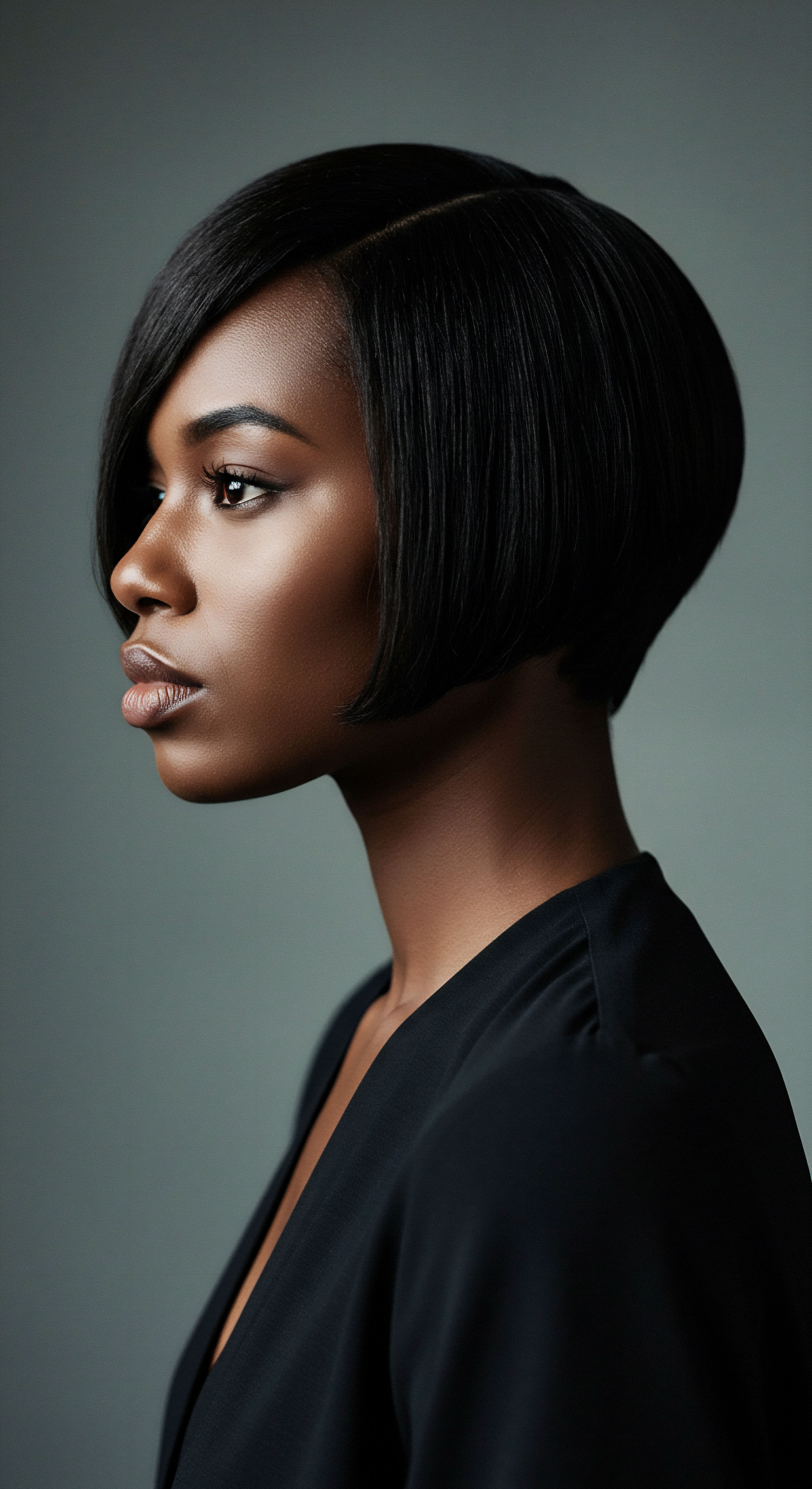
Practical Pillars of Preservation
Effective Curl Pattern Preservation relies upon several interconnected practices, each playing a vital role in safeguarding the hair’s natural form. These practices extend beyond simply applying products; they involve a deeper comprehension of how hair responds to moisture, manipulation, and environmental elements.
- Hydration Prioritization ❉ Textured hair, with its unique follicular structure, often finds it challenging for natural oils to travel down the entire strand, making it prone to dryness. Consistent and adequate hydration through water-based products and deep conditioning treatments is paramount to maintaining curl elasticity and preventing breakage.
- Gentle Detangling ❉ The helical shape of curly and coily strands can cause them to interlock, leading to tangles. Detangling with care, using fingers or a wide-tooth comb on wet, conditioned hair, minimizes stress on the curl pattern, averting mechanical damage that could disrupt its shape.
- Protective Styling ❉ Styles that gather and shield the hair, such as braids, twists, or buns, reduce exposure to environmental stressors and daily manipulation. This helps to keep the curl pattern intact for longer periods, lessening the need for frequent re-styling.
- Minimal Heat Application ❉ Excessive heat from styling tools can permanently alter the hair’s protein structure, leading to a loss of curl definition, often referred to as heat damage. Embracing air drying or low-heat diffusion preserves the natural curl bonds.
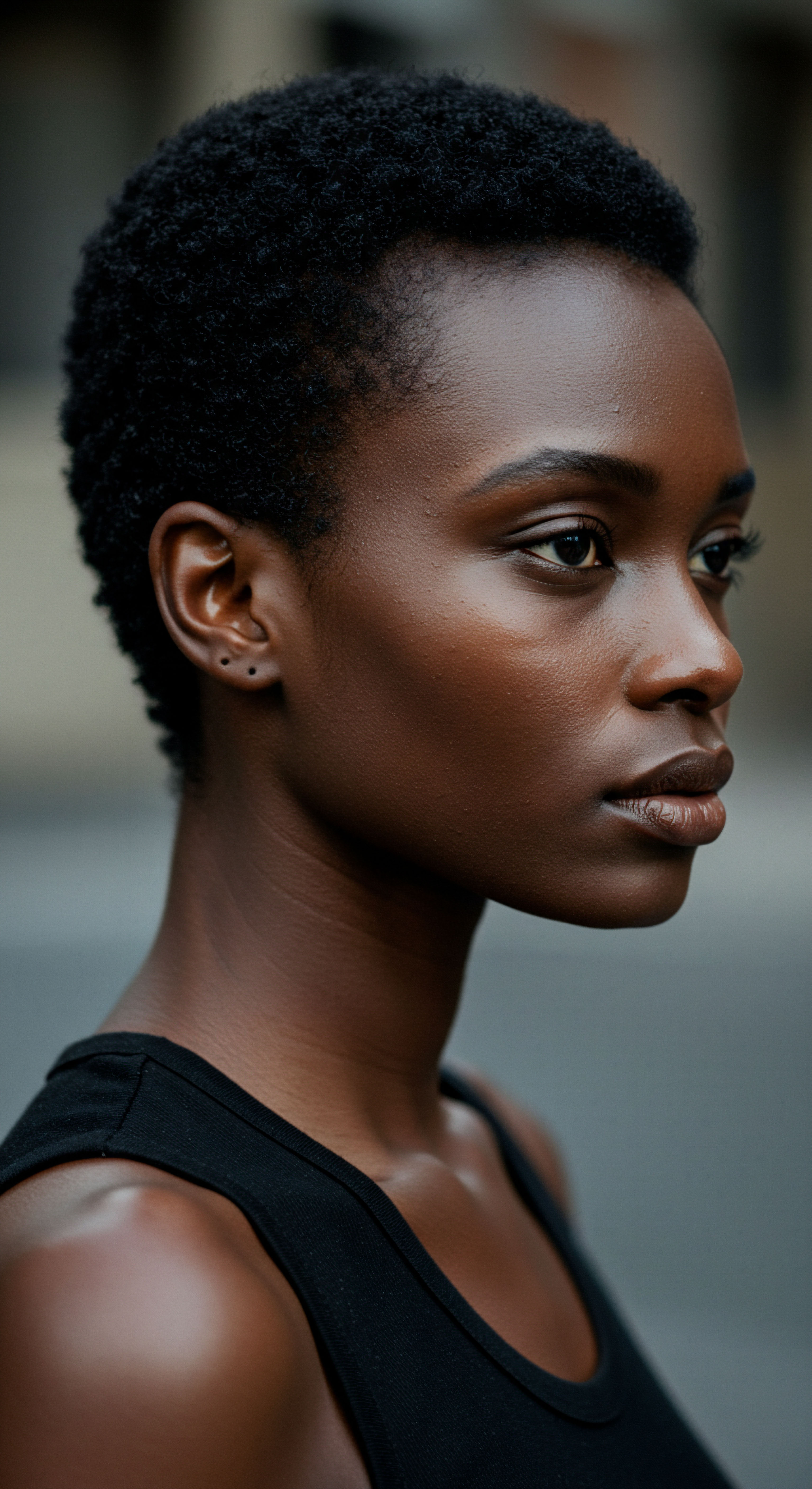
The Moisture Equilibrium
A central tenet in this intermediate exploration of Curl Pattern Preservation is the concept of Moisture Equilibrium. Textured hair thrives when its moisture levels are balanced, neither overly saturated nor excessively dry. When hair lacks sufficient moisture, the cuticle scales may lift, leading to frizz and a loss of defined curl.
Conversely, too much moisture without proper sealing can also lead to a weakened structure over time. The careful selection of humectants, emollients, and occlusives in hair products helps to achieve this delicate balance, supporting the hair’s ability to retain its curl pattern.
Maintaining the curl’s integrity means understanding its thirst for moisture and shielding it from harsh influences.
Consider the daily rituals of a textured hair enthusiast. The selection of a sulfate-free cleanser, designed to purify without stripping essential oils, marks the initial step. Following this, a rich conditioner helps to smooth the cuticle and infuse moisture.
For many, a leave-in conditioner or curl cream becomes a cherished companion, providing additional hydration and hold, encouraging the coils to clump and form their distinct shapes. These deliberate choices, rooted in an understanding of the hair’s inherent needs, are the practical expressions of Curl Pattern Preservation.
The influence of environmental factors, such as humidity, also comes into sharper focus at this stage. High humidity can cause hair to absorb excess water, leading to swelling and frizz, while low humidity can strip moisture, leaving strands brittle. Adjusting product choices and styling techniques to account for these external conditions demonstrates a refined approach to Curl Pattern Preservation, moving beyond a one-size-fits-all methodology.
| Factor Moisture Content |
| Influence on Curl Directly affects elasticity and definition; low moisture leads to frizz and breakage. |
| Preservation Strategy Consistent deep conditioning, water-based products, moisture-sealing. |
| Factor Mechanical Stress |
| Influence on Curl Rough handling, tight styles, and aggressive detangling can disrupt the curl structure. |
| Preservation Strategy Gentle detangling on wet hair, protective styling, satin pillowcases. |
| Factor Heat Exposure |
| Influence on Curl High temperatures can permanently alter protein bonds, causing irreversible pattern loss. |
| Preservation Strategy Air drying, low-heat diffusion, heat protectants when absolutely necessary. |
| Factor Product Selection |
| Influence on Curl Ingredients can either support or hinder curl formation and health. |
| Preservation Strategy Choosing products free of harsh sulfates and silicones, opting for moisturizing agents. |
| Factor A harmonious blend of mindful practices and suitable products sustains the natural curl pattern. |
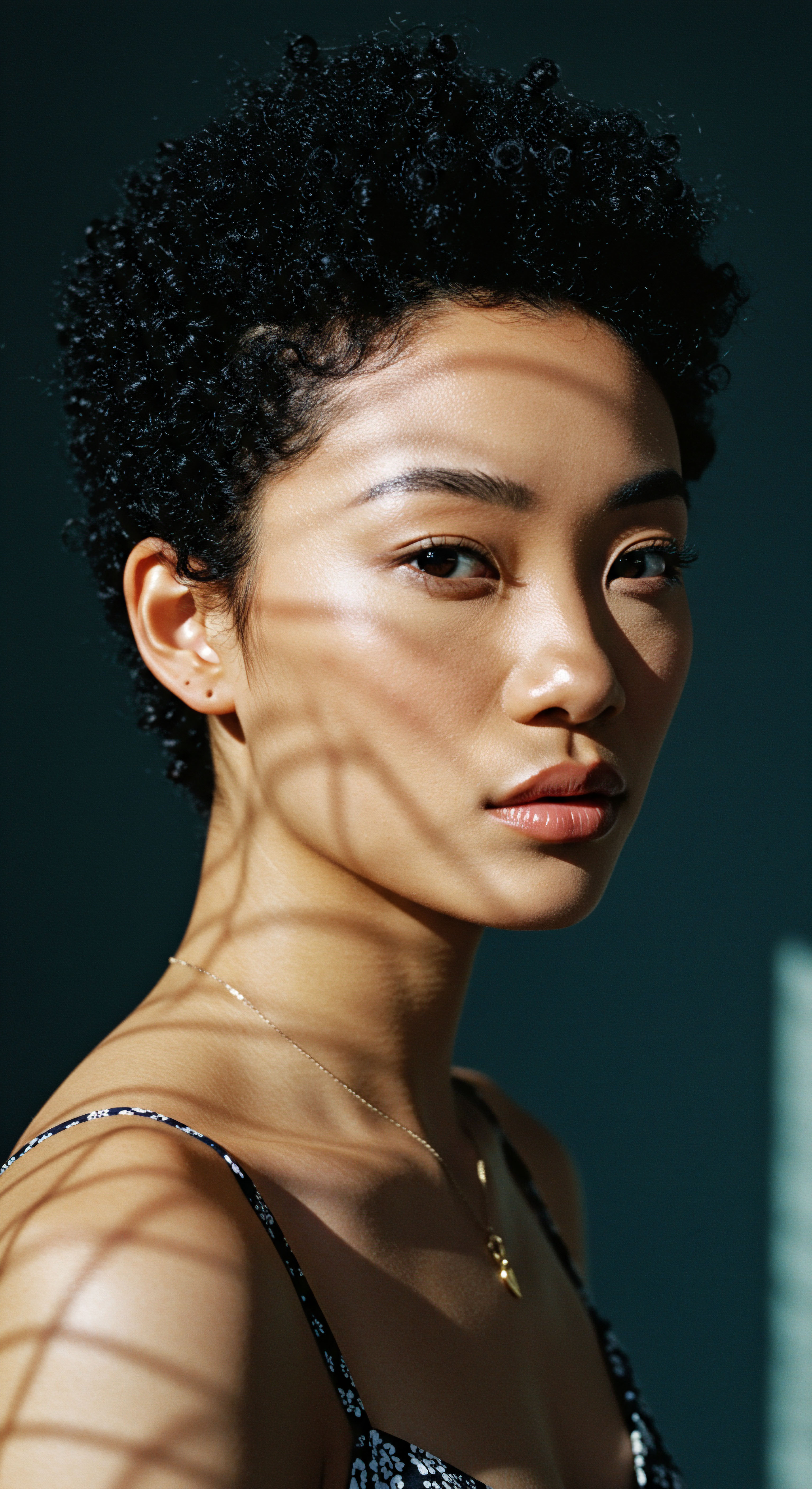
Advanced
The advanced interpretation of Curl Pattern Preservation transcends simple care routines, inviting a comprehensive analysis rooted in scientific understanding, historical context, and socio-cultural implications, particularly for textured hair, Black hair, and mixed-race hair heritage. This is not merely about maintaining a style; it is about acknowledging a profound biological reality, navigating a complex historical landscape, and asserting identity. The meaning here deepens into an elucidation of the very biological mechanisms at play, alongside a critical examination of societal pressures that have historically sought to diminish the intrinsic beauty of natural curl.

The Biomechanical Delineation of Curl Preservation
From a trichological perspective, Curl Pattern Preservation is the deliberate safeguarding of the hair fiber’s complex biomechanical properties. The distinctive helical structure of textured hair arises from the elliptical cross-section of the hair follicle and the uneven distribution of cortical cells (ortho-cortex and para-cortex) within the hair shaft. This asymmetry creates differential stresses during keratinization, compelling the fiber to coil. Furthermore, the higher density of disulfide bonds in Afro-textured hair contributes significantly to its unique structure and inherent curl.
Preservation, then, involves protecting these disulfide bonds and the delicate hydrogen bonds that lend elasticity and shape memory to the curl. When these bonds are disrupted—through excessive chemical processing, aggressive heat styling, or mechanical friction—the hair’s ability to revert to its natural curl pattern is compromised, leading to permanent structural alteration, often termed “heat damage” or “chemical damage.”
The hair’s porosity, its ability to absorb and retain moisture, plays a pivotal role in this advanced understanding. Textured hair, particularly Type 4 coils, often exhibits a lower porosity, meaning its cuticle layers are tightly packed, making it difficult for moisture to penetrate but also challenging to release once absorbed. This characteristic influences product efficacy and necessitates specific formulations that can effectively hydrate and seal the cuticle without causing excessive buildup. A nuanced comprehension of the interplay between hair porosity, environmental humidity, and product chemistry is indispensable for long-term curl pattern integrity.
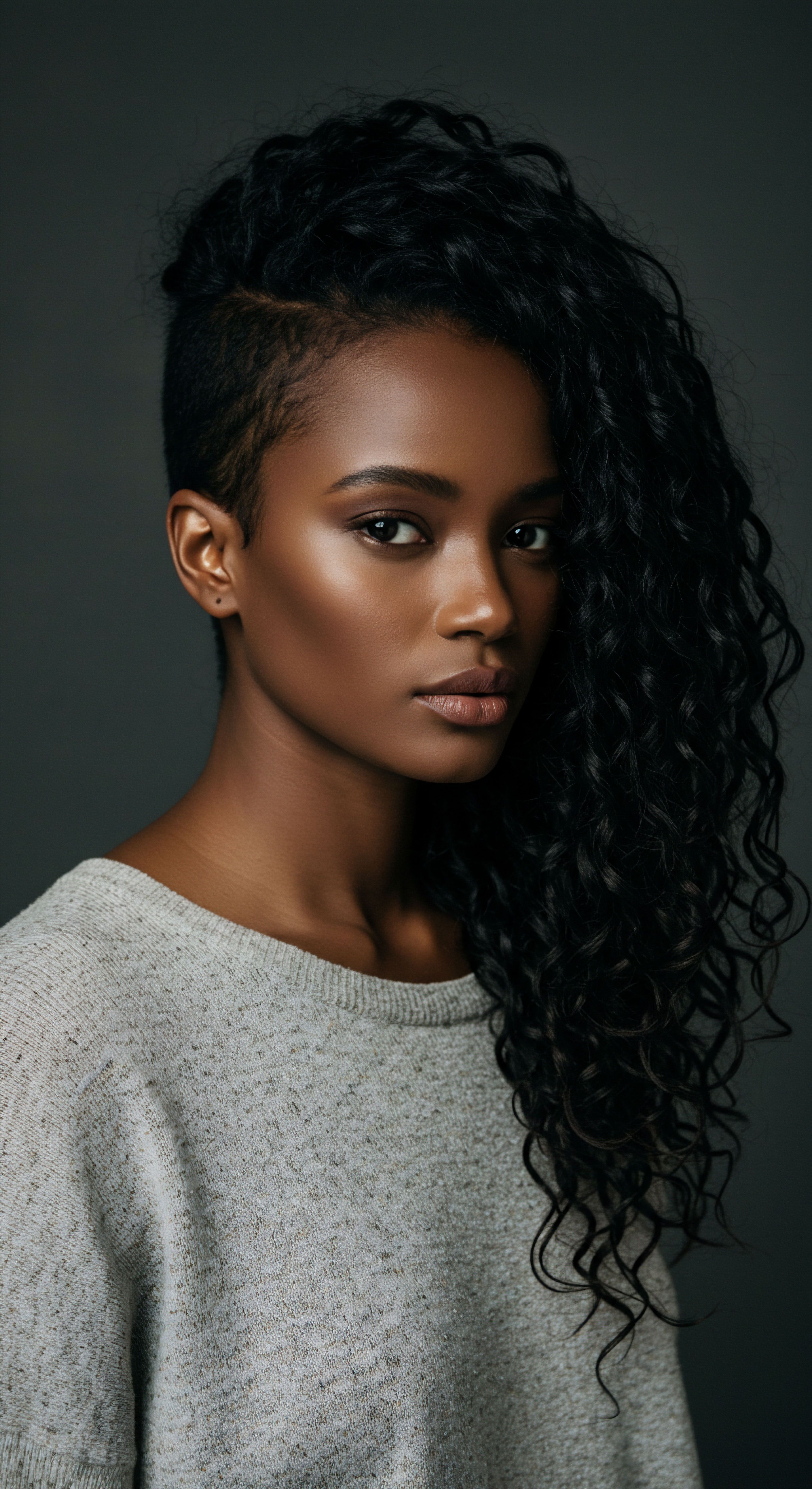
A Controversial Legacy ❉ Bias and the Quest for Preservation
The discourse surrounding Curl Pattern Preservation for Black and mixed-race hair cannot be separated from a historical narrative of societal bias and systemic marginalization. For centuries, Eurocentric beauty standards have permeated global perceptions of hair, often rendering natural textured hair as “unprofessional,” “unruly,” or “less desirable.” This pervasive devaluation has had tangible, and often controversial, consequences for individuals seeking to maintain their natural curl patterns.
The very act of preserving one’s curl pattern for Black and mixed-race individuals is a powerful assertion against centuries of societal bias.
Consider the profound impact of the “Good Hair Study,” conducted by the Perception Institute in collaboration with Shea Moisture, which surveyed over 4,000 participants. This research revealed that a significant majority of individuals, irrespective of their own race or gender, harbored some degree of implicit bias against women of color based on their hair, with white women exhibiting the strongest explicit and implicit biases, rating textured hair as “less beautiful,” “less sexy/attractive,” and “less professional” than smooth hair. This deeply ingrained bias has historically compelled many Black women to chemically straighten their hair to conform to workplace and social norms, often at the expense of their hair’s health and, more critically, their overall well-being.
The decline in the chemical relaxer market, as noted by market research firm Kline & Co. from approximately $71 million in 2011 to $30 million in 2021, represents a compelling real-world data point illustrating a collective shift towards Curl Pattern Preservation. This significant reduction, driven by evolving beauty standards and mounting health concerns regarding the chemical ingredients linked to uterine fibroids and various cancers, signifies a powerful reclamation of natural hair.
The decision to move away from chemical alteration is not merely a cosmetic choice; it is a profound act of self-acceptance and cultural affirmation, recognizing the inherent value and beauty of one’s natural curl. This movement, often termed the “natural hair movement,” has fostered a sense of empowerment and community, highlighting the psychological well-being derived from embracing one’s authentic texture.

The Cultural and Historical Resonance
The historical significance of Black hair as a symbol of identity, status, and resistance dates back to pre-colonial African societies, where intricate hairstyles conveyed messages about tribal affiliation, marital status, and social standing. The transatlantic slave trade violently disrupted these traditions, forcing enslaved Africans to abandon their cultural hairstyles and adopt practices that aligned with oppressive Eurocentric ideals. For generations, chemical straightening became a means of survival and perceived acceptance within a discriminatory society.
Therefore, the contemporary pursuit of Curl Pattern Preservation is a powerful act of defiance, a reclaiming of ancestral beauty, and a conscious rejection of imposed standards. It represents a reconnection to a rich heritage and a celebration of diverse forms of beauty.
| Historical Factor Eurocentric Beauty Standards |
| Consequence for Curl Pattern Pressure to chemically straighten hair, leading to damage and loss of natural curl. |
| Modern Response/Implication Natural hair movement, CROWN Act legislation, re-evaluation of beauty norms. |
| Historical Factor Under-representation in Research |
| Consequence for Curl Pattern Lack of tailored products and scientific understanding for textured hair. |
| Modern Response/Implication Increased specialized research (e.g. Carra Labs' "Texture Gap" report), bespoke product development. |
| Historical Factor Health Concerns from Relaxers |
| Consequence for Curl Pattern Physical damage to hair and scalp, potential links to serious health issues. |
| Modern Response/Implication Decline in relaxer sales, emphasis on protective styling and gentle care. |
| Historical Factor Understanding the past informs the empowered choices of the present in textured hair care. |
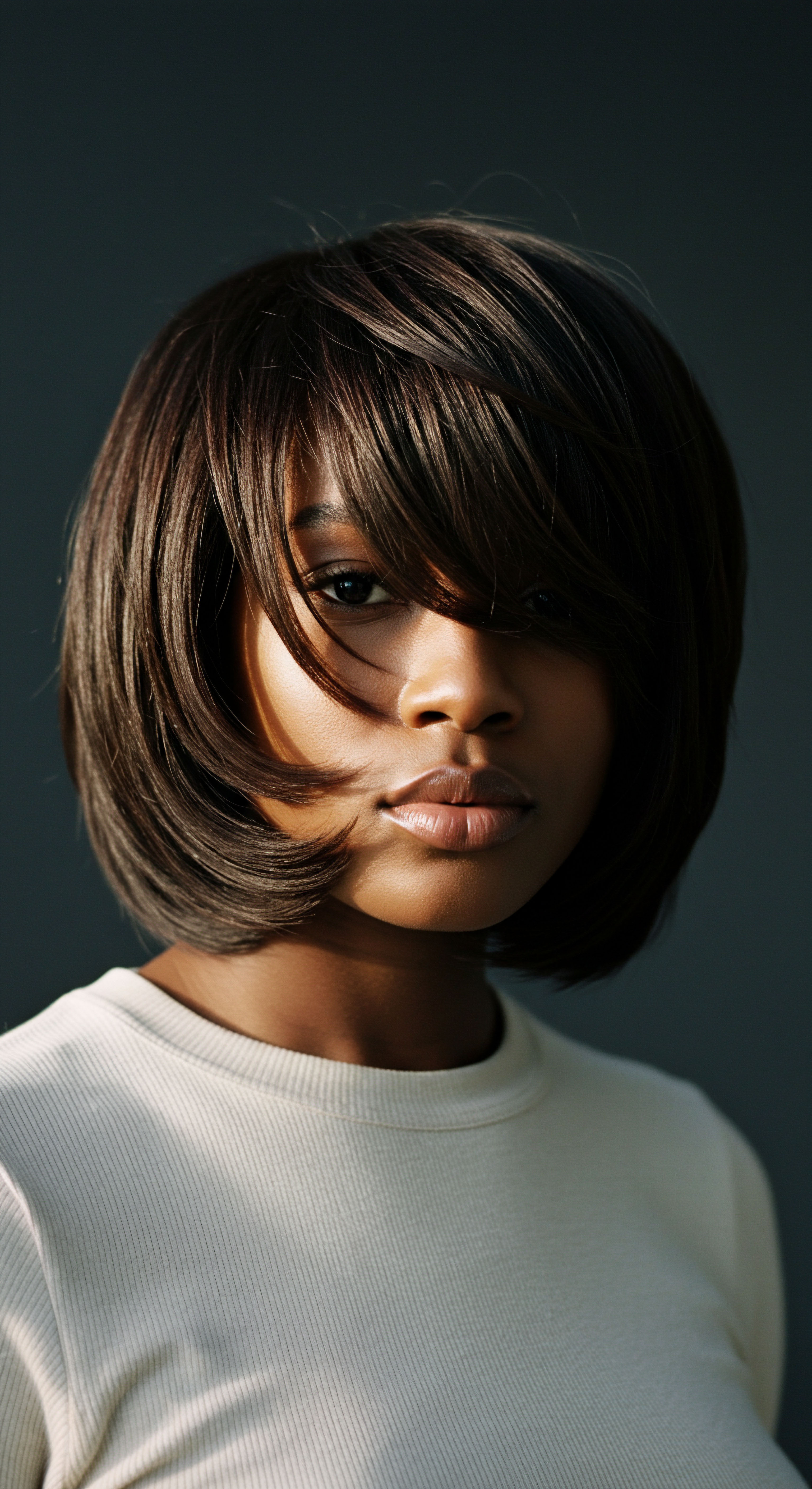
Long-Term Implications and the Path Forward
From an advanced perspective, the long-term success of Curl Pattern Preservation hinges on a holistic approach that acknowledges the interplay of genetics, biology, product science, and societal factors. This necessitates continued research into the unique properties of textured hair, fostering innovation in product development that truly supports its integrity. It also calls for a sustained cultural shift, advocating for policies like the CROWN Act, which prohibits discrimination based on hair texture or protective hairstyles.
For brands and experts, this signifies a responsibility to move beyond superficial solutions. It means investing in deeper scientific inquiry into textured hair biomechanics, developing products with ingredients that truly align with its unique needs, and actively challenging beauty narratives that exclude or devalue natural curls. The commitment to Curl Pattern Preservation, in this advanced context, is a commitment to equity, health, and cultural affirmation, creating a world where every curl is celebrated in its authentic glory.

Reflection
The journey through Curl Pattern Preservation, from its simplest interpretation to its most intricate layers, reveals a profound narrative that extends far beyond the realm of hair care. It speaks to a deeper connection with self, heritage, and the quiet power of embracing one’s authentic form. Each carefully nurtured coil, every resilient strand, tells a story of identity asserted and beauty reclaimed.
This endeavor is a tender dialogue between science and soul, where the wisdom of ancestral practices meets the precision of modern understanding, culminating in a celebration of the unique artistry inherent in textured hair. It is a testament to the enduring spirit of those who choose to honor their crowns, recognizing that true radiance emanates from within, reflected in the vibrant health of every preserved curl.
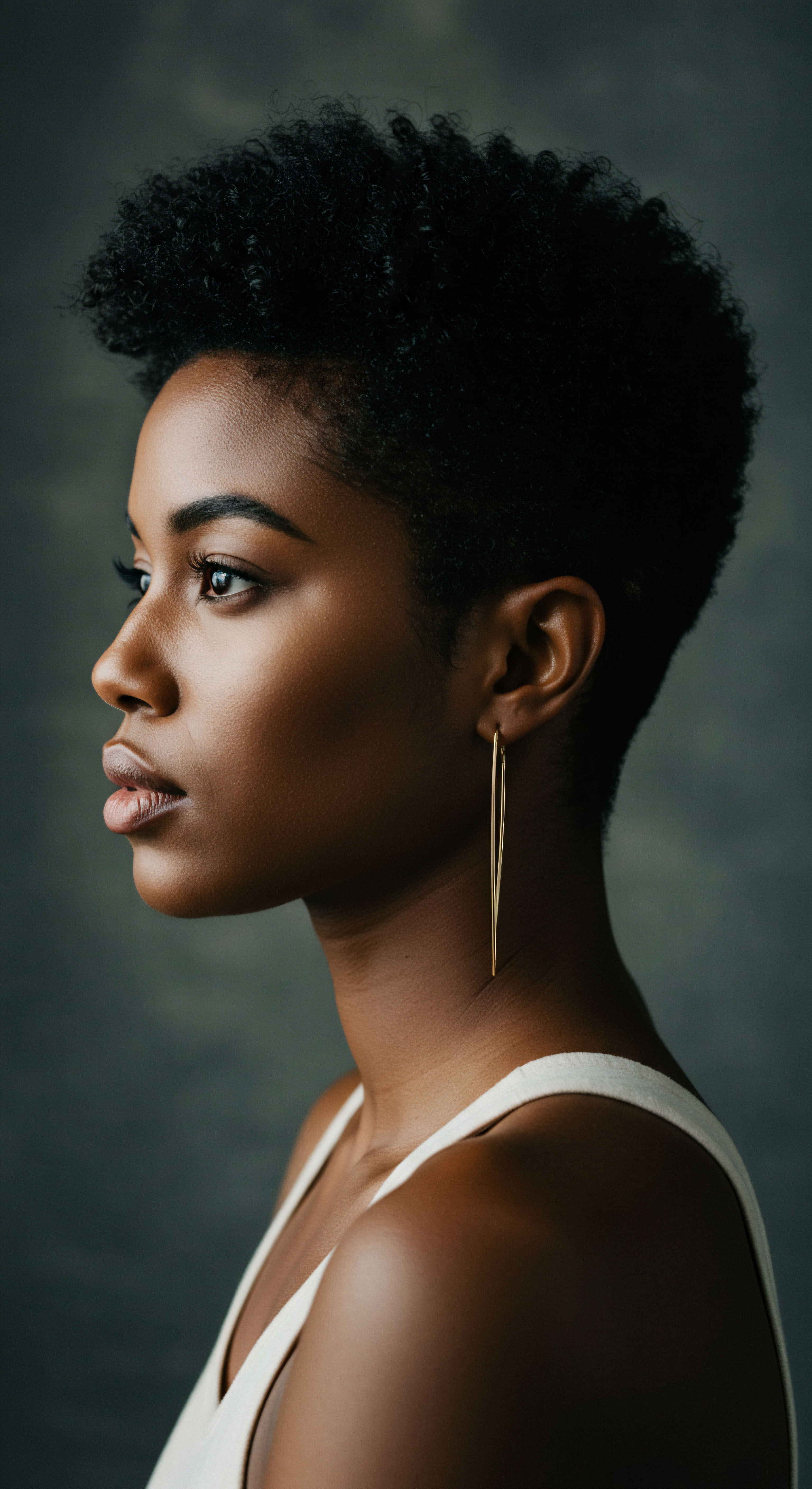
References
- Byrd, Ayana, and Tharps, Lori L. Hair Story ❉ Untangling the Roots of Black Hair in America. St. Martin’s Publishing, 2001.
- Davis-Sivasothy, Audrey. The Science of Black Hair ❉ A Comprehensive Guide to Textured Hair Care. Sivasothy Publishing, 2011.
- Gavazzoni Dias, Maria Fernanda. “Hair Cosmetics ❉ An Overview.” International Journal of Trichology, vol. 7, no. 1, 2015, pp. 2-15.
- Khumalo, Ncoza D. et al. “The biology and genetics of curly hair ❉ a review.” Journal of Investigative Dermatology Symposium Proceedings, vol. 18, no. 1, 2017, pp. S20-S24.
- Mintel. “Black Haircare ❉ US, 2013.” Mintel Reports, 2013.
- Perception Institute and Shea Moisture. “Good Hair Study ❉ Explicit and Implicit Attitudes Toward Black Women’s Hair.” 2017.
- Porter, Daniel. “The Person Beneath the Hair ❉ Hair Discrimination, Health, and Well-Being.” Journal of Racial and Ethnic Health Disparities, 2023.
- Rosette, Ashleigh Shelby, et al. “Research Suggests Bias Against Natural Hair Limits Job Opportunities for Black Women.” Social Psychological and Personality Science, 2020.
- Saintemarie, Agnieszka. “The U.S. market of hair straighteners and relaxers.” Kline & Co., 2021.
- Sears, J. K. “Chemical/Straightening and Other Hair Product Usage during Childhood, Adolescence, and Adulthood among African-American Women ❉ Potential Implications for Health.” Journal of the National Medical Association, 2019.
- Welsing-Kitcher, Ava. “The Texture Gap Report.” Carra Labs, 2023.
- White, Alexandra J. et al. “Use of Straighteners and Other Hair Products in Relation to Uterine Leiomyoma Risk.” Environmental Research, vol. 222, 2023, Article 115340.